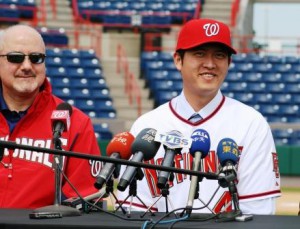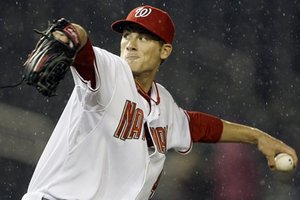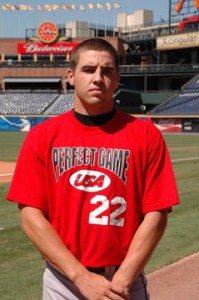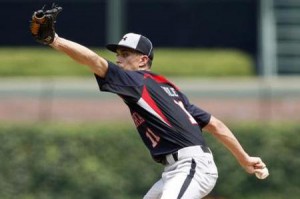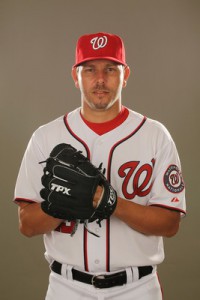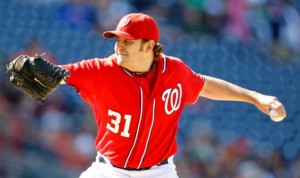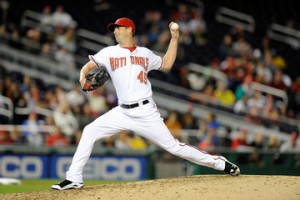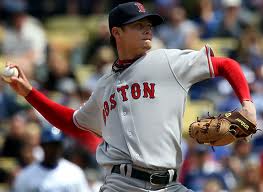I’m back, at least with Nats Rotation Cycles, after missing #21 and #22. Basically, while we were gone:
- Livan Hernandez continued his up and down ways, but managed to avoid getting traded. Meanwhile…
- John Lannan had a hiccup in his great run of form lately.
- Jordan Zimmermann had one bad outing and one great one.
- Tom Gorzelanny got demoted to the bullpen, paving the way for…
- Chien-Ming Wang came of the DL after 2+ years and joined the rotation.
- Jason Marquis got traded to Arizona the day he was set to pitch, meaning…
- Yunesky Maya was recalled for one spot start, in which he did fantastically but strained an oblique, meaning that..
- Ross Detwiler gets another shot at the rotation in Marquis’ spot.
Lets get back into the swing of things, starting with Rotation cycle #23. After all these moves, we’re now set on this rotational order: Hernandez, Lannan, Wang, Detwiler and Zimmermann.
Good
- Livan Hernandez put a “good” after a bad outing for about the 10th time in a row this season, a maddeningly frustrating run of form that has this pundit calling for his rotation spot. He went for 1run over 6 innings against the Braves on 8/1 (box/gamer) for the victory.
- Jordan Zimmermann pitched effectively enough in Colorado on 8/5 to get the victory (box/gamer). He went 5 2/3 innings, giving up 4 hits, 2 runs and 2 walks while striking out 8. Both those runs were inherited and allowed to score by the cardiac-kid Henry Rodriguez, who nearly blew the 4 run lead that the offense staked its pitching staff to before getting bailed out by Tyler Clippard. See Notes section for more thoughts on Rodriguez.
Bad
- Chien-Ming Wang: two starts, two blowouts. He turned 3 singles and a walk into two runs in the first, then seemed to settle down, getting lots of ground-outs (as expected). In the 5th he leaked in a run by virtue of his own throwing error before giving up an absolute bomb of a 3-run homer to Dan Uggla. The runs in the 5th may not have been earned in the scorebook, but they were Wang’s fault in my book. Final line: 5ip, 7hits, 6 runs (2 earned) and a 6-4 loss on 8/3 (box/gamer). As Ben Goessling reported, Wang went longer threw more pitches, but we’re essentially seeing spring training outings in August. The team really has no choice but to keep throwing him out there, having already invested $3M in the guy.
Mediocre/Inconclusive
- John Lannan got bailed out of his up-and-down start on 8/2 (box/gamer) by virtue of a power-show by his batters. Ankiel’s grand slam and Morse’s towering upper-deck opposite field number contributed to an easy win. Lannan ended up with 8ks over 6 1/3, giving up 3 runs early and then cruising along to the win.
- Ross Detwiler got the loss on 8/4 in Colorado, giving up 2 runs in 5 innings. I discussed this start at length here, including links to the gamer/box, pitch f/x and analysis.
Starter Trends (2nd half only): Livan is Dr. Jekyll this week, while Wang’s struggles are somewhat expected. Zimmermann has turned it around after a couple of sub-par outings.
- Lhernandez bad,good,bad,good
- Lannan good,good,bad,soso
- Wang bad,bad
- Detwiler soso
- Zimmermann bad,bad,great,good
- (Gorzelanny incomplete,bad->demoted to bullpen)
- (Maya good->demoted)
- (Marquis good,soso->traded)
Relievers of Note and other News
- After many rumors towards the end of the Trade Deadline cycle, both Tyler Clippard and Drew Storen are still safely in the Nationals bullpen. And honestly, I hope they stay there. Yes I know that relievers are over-rated but these two guys are integral parts to the vast improvement of our pitching staff’s performance over the past few years. Here’s the number of runs allowed over the past few seasons: 2007: 783, 2008: 825 , 2009: 874, 2010: 742, 2011 on pace for 652. That’s almost 100 runs better than last season, and a whopping 220 runs better than just two years ago.
- The savior, Stephen Strasburg, is scheduled to make his first rehab start in Hagerstown on Sunday August 7th. I wonder if his rehab starts will get National media exposure and live coverage like his minor league starts did. Either way, it will be interesting to see how many mph he’s hitting his first time back.
- After Yunesky Maya‘s excellent 7/31 start (in place of the traded Jason Marquis), we thought perhaps he’d stick in that role. But the slight injury he suffered on the basepaths not only removed him from that game, but got him sent back to AAA where he subsequently got rocked. It would have been nice to see him try to build on that start.
- Davey Johnson has said he wants to see some of AAA’s stellar pitching feature in the majors, alluding to the performances of both Tommy Milone and perhaps Brad Peacock. Milone has been solid all year in AAA, and Peacock’s first four AAA starts have been up and down, with his amazing k/bb rates skyrocketing to the bad. It may be premature to consider Peacock, but Milone seems to be option #1-A to replace Zimmermann when he runs out of innings in a few weeks.
- Henry Rodriguez‘s 8/5 line: 3 hits, 1 walk, two inherited runners allowed to score and zero outs recorded. Hey, at least he didn’t throw a ball to the backstop with the bases juiced. He’s now sporting a 1.61 whip on the season and his Jekyll and Hyde appearances have to be wearing out the patience of his manager. He’s blown all three save opportunities he’s had and has let 33% of his inherited runners score. That’s not as bad as Slaten’s 50% IR-IS rate but its not a good rate for a reliever that needs to pitch in high leverage situations.
